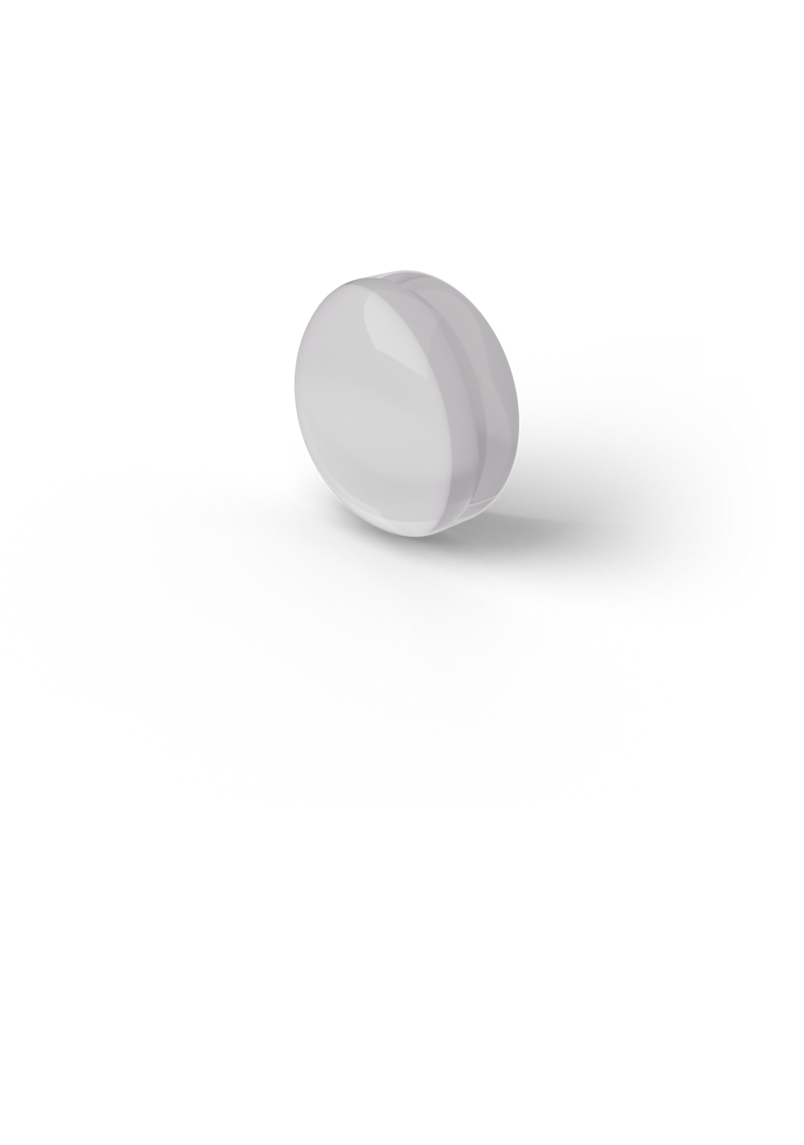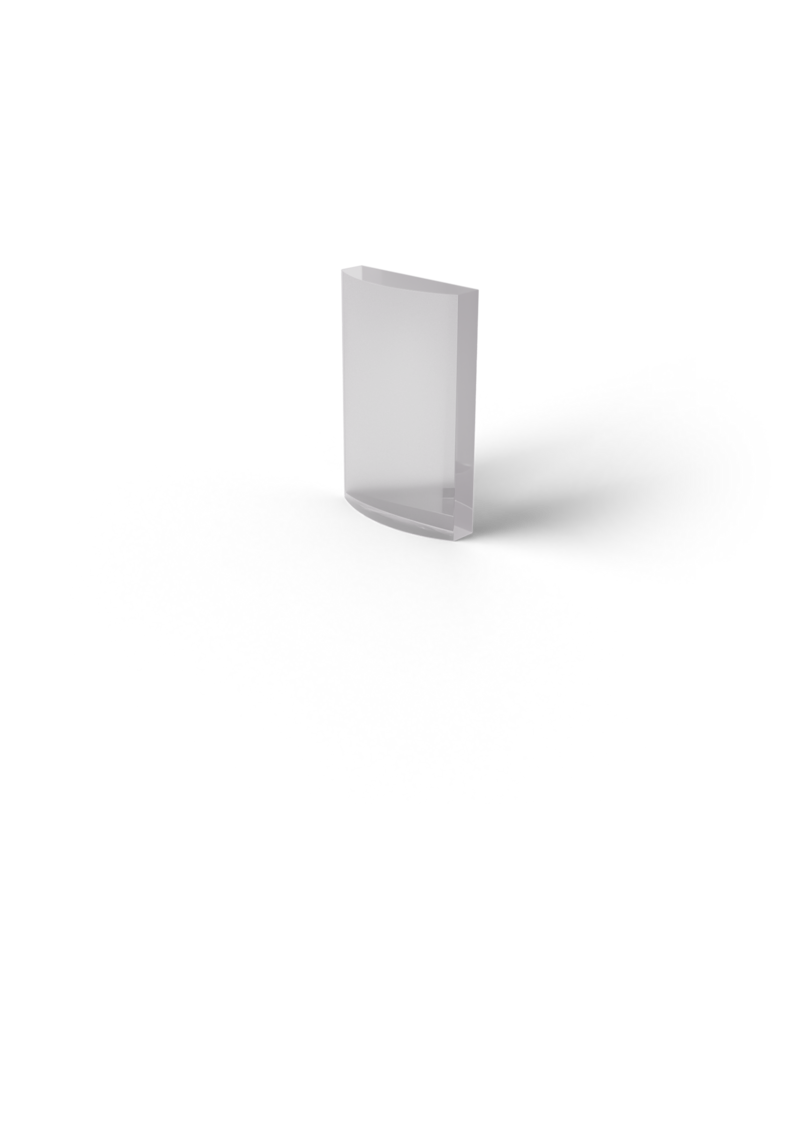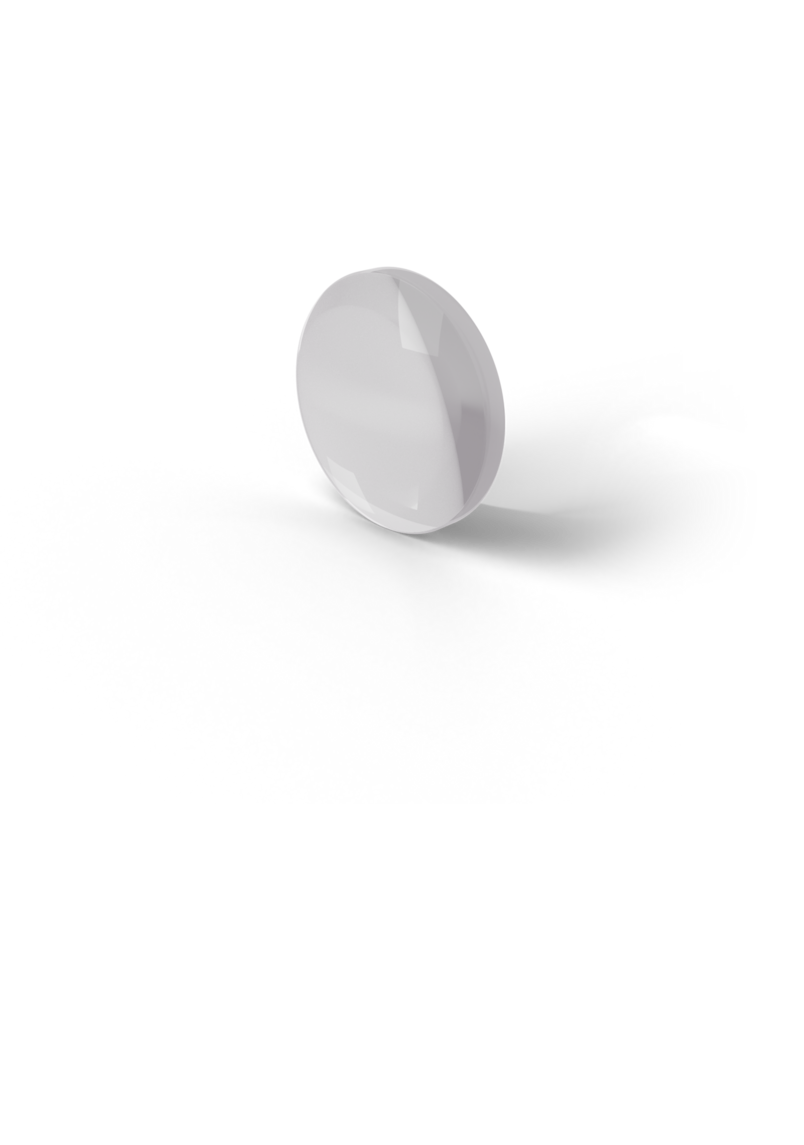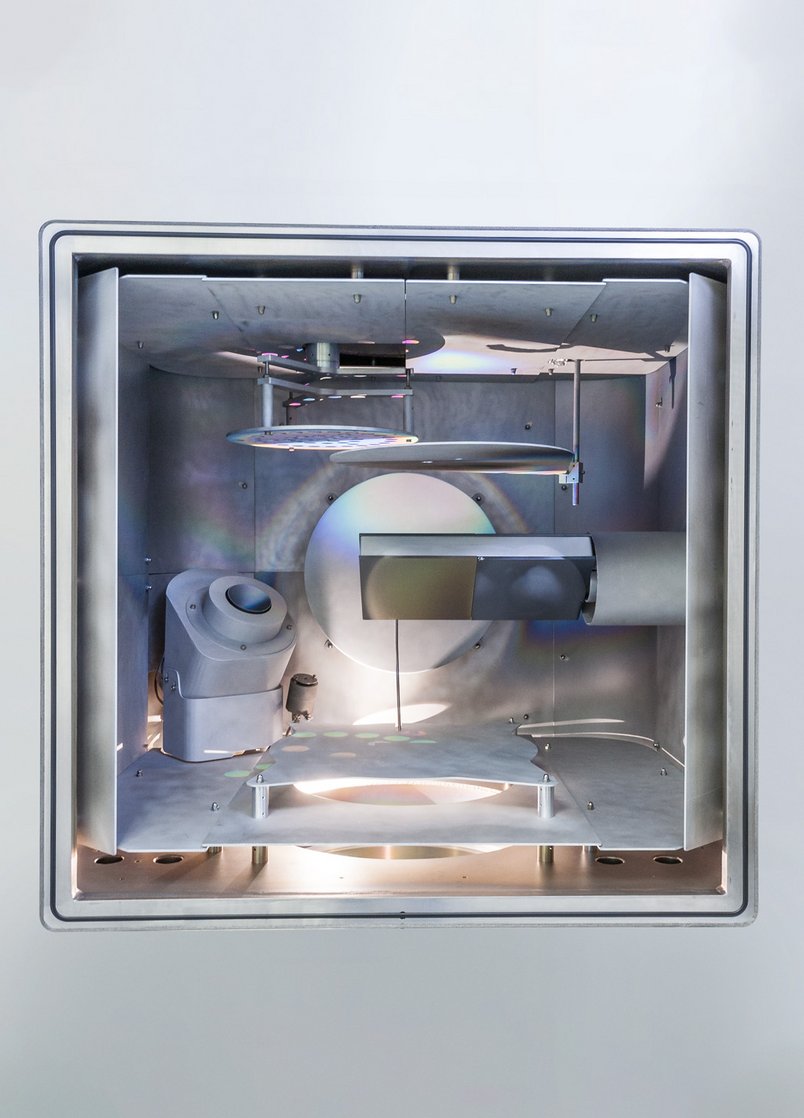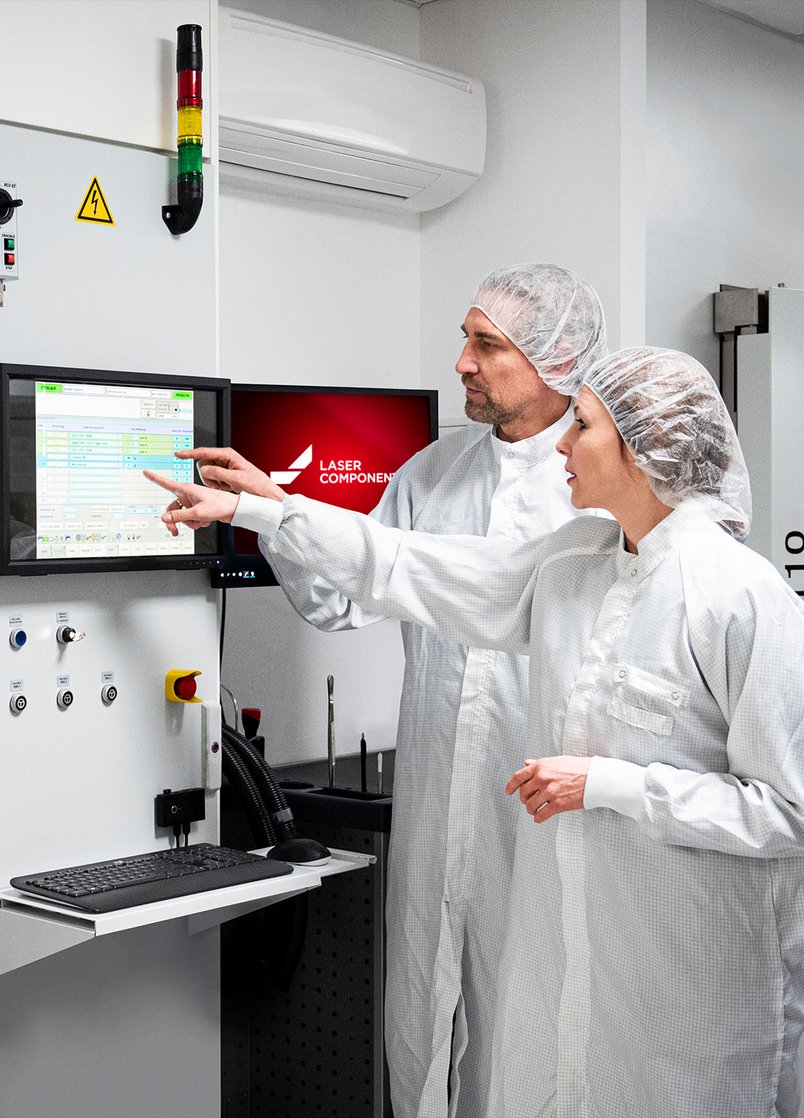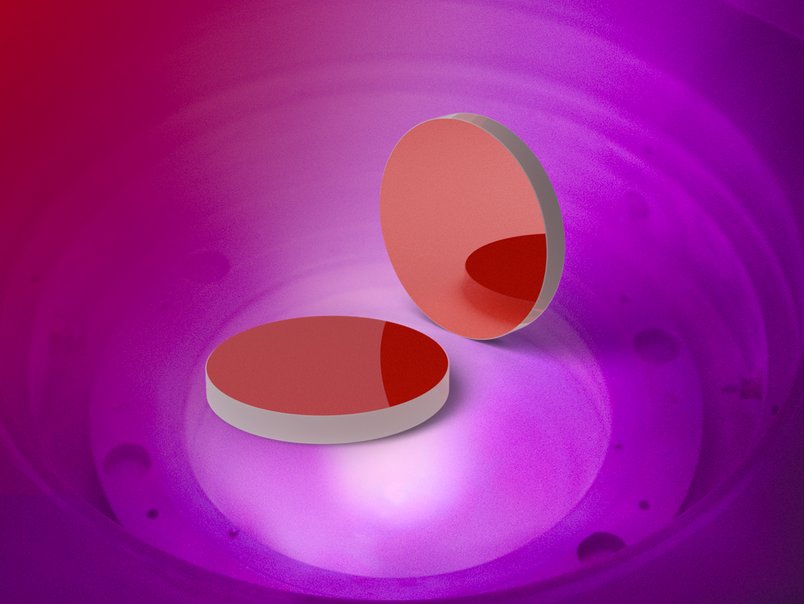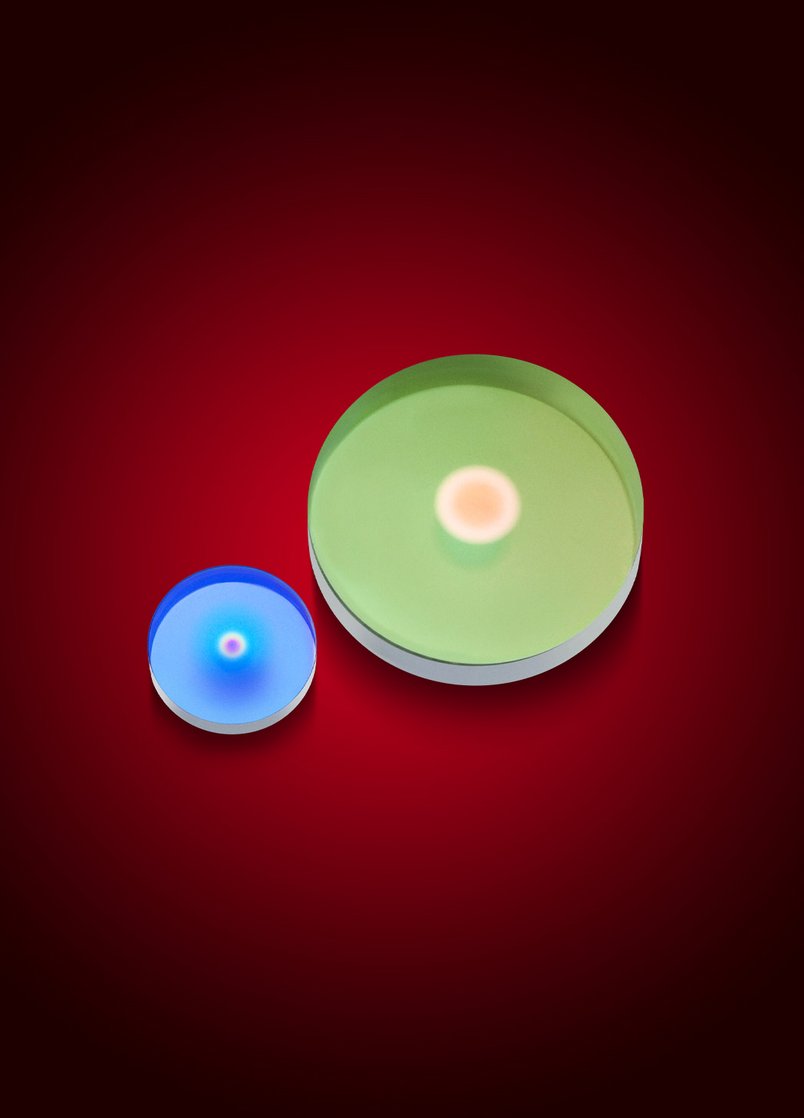Tips for Choosing the Right Lens for Your Laser
Users are often faced with the question of which lens is best suited for their image. The following section introduces standard lens types and describes their most common areas of application.
Converging and Dispersing Lenses
In general, there are positive (i.e. converging) lenses and negative (i.e. dispersing) lenses. Lenses with convex surfaces are positive lenses: the focal distance of the lens is described with a positive sign. Lenses with concave surfaces are negative lenses: these lenses have a negative focal distance. The meniscus lens can be both a positive lens and a negative lens.
Optical Lenses
Typical lenses and their areas of application

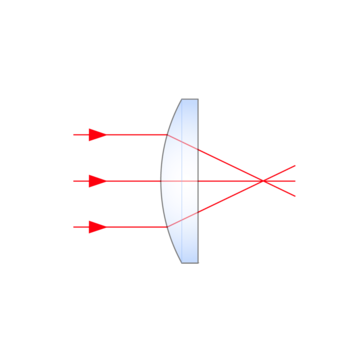
Plano-convex Lens
- Focussing of collimated laser beams
- Beam expansion and collimation
- Imaging over long focal distances

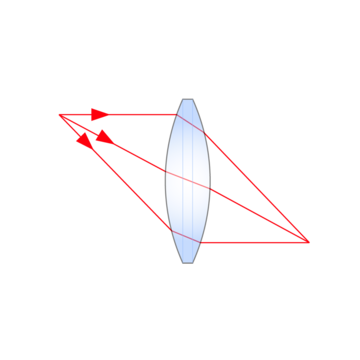
Biconvex Lens
- Focussing over very short focal distances
- Beam expansion for F2/F1 = 0.2 .. 5
- 1:1 image because the spherical aberration in this case is low.

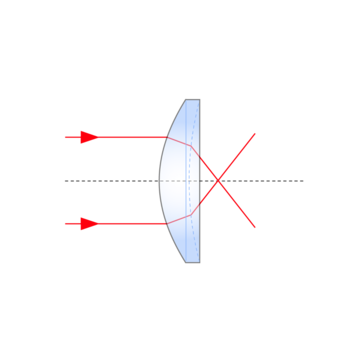
Meniscus Lens
-
This lens is used if the lowest spherical aberration is required.
-
For short focal distances a meniscus lens can be used instead of a lens system as an end lens. With the meniscus lens, the spherical aberration is reduced.
-
Astigmatism correction
-

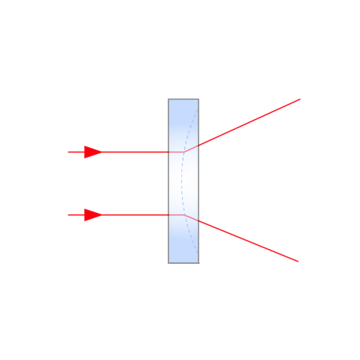
Plano-concave Lens
- Beam expansion
- Galileo’s principle at high power levels,
- no intermediate focus like in the application of two plano-convex lenses
- Shorter assembly length than in the Keppler expansion


Biconcave Lens
- Used if very short negative focus lengths are required and a planoconcave lens would require a radius of curvature that is too large.

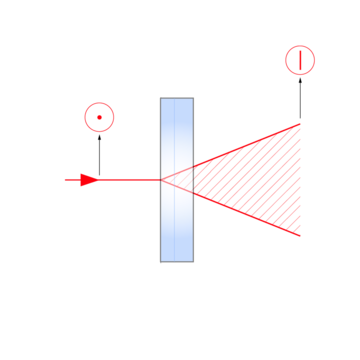
Cylindrical Lens
- Collimation of asymmetrical beam paths
- Line focussing
- Astigmatism correction

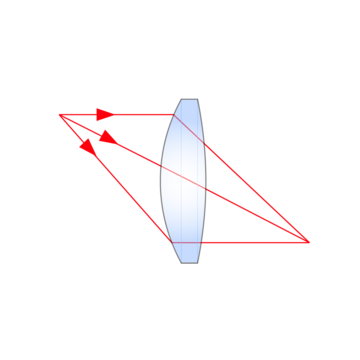
Best form Lens
- Application with high demands of the spot image
- Minimal possible spherical aberration for a single lens

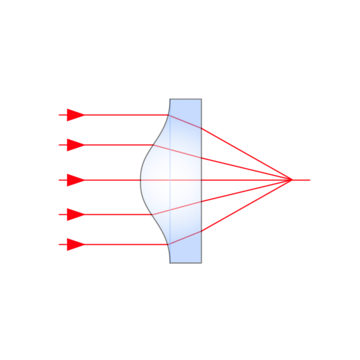
Aspherical Lens
- Lenses show no spherical aberrations due to a less curvature at the edges. As a result, even marginal rays converge at the focal point.

+49 8142 2864-41
Type of Lenses
converging and diverging lenses
In general, there are positive, i.e. converging, lenses and negative, i.e. dispersing, lenses. Lenses with convex surfaces are positive lenses: the focal distance of the lens is described with a positive sign. Lenses with concave surfaces are negative lenses: these lenses have a negative focal distance. The meniscus lens can be both a positive lens and a negative lens.
Compared to lenses with two curved surfaces, plano-convex and plano-concave lenses have the advantage of being easier to manufacture and therefore cheaper. In addition, they are particularly well suited for focussing and collimating laser beams. The spherical aberrations of plano-convex and plano-concave lenses are reduced by letting the curved side of the lens face the collimated beam.
Biconvex lenses are preferred when close to 1:1 images are required. Biconvex and biconcave lenses are also used if very short focal distances are needed. Because both surfaces are curved, a shorter focus length with larger radii is possible. Very heavily curved surfaces are expensive to manufacture because only a few lenses can be polished at the same time.
Best form lenses are singlet lenses in which the spherically curved surfaces are optimized to exhibit the least spherical aberration possible for a singlet lens.
Aspherical lenses are used if spherical aberrations must be avoided. These lenses have a smaller curvature at the edges, causing even marginal rays to intersect at the focal point. Optimization of these lenses is done through the use of optic design simulation programs.
Meniscus lenses are lenses with a concave and convex curvature. They are used in lens systems to correct spherical aberrations and astigmatism.
Lens Systems
For protype testing and the lab
If the imaging quality of a “simple“ lens is inadequate, different standard lens systems can be used that have often proven adequate in the laboratory during the testing of prototypes or assemblies. The following existing systems are of importance in laser technology:
- Aplanatic lenses, triplets (reduction of spherical aberrations)
- Zoom objectives
- Telecentric objectives (constant imaging scale, e.g. for object recognition)
- F-Theta objectives (scanning objectives)
- Beam expanders
- Collimator objectives
Abberations in Laser Optics
How to find the best lens system
Single lenses cause imaging errors. Read more about the typical imaging errors that play a role in laser optics.

Spherical Aberrations
Spherical aberrations are caused by wide open beams that run symmetrically to the optical axis. An optimal focussing in a single point only occurs for paraxial beams. Beams that are farther from the optical axis are refracted at a shorter distance, i.e. the focal point of edge beams comes before the focal point of central beams. This is known as a spherical aberration. It grows with shorter focal distances and larger beam diameter.
The refractive index of the lens used also has an influence on spherical aberration: it can be reduced by using materials with a higher refractive index.
This error can also be improved in a single lens by optimizing the radii (best-form lens) or, alternatively, by using multiple spherical surfaces (lens systems). This reduction is achieved by using lens surfaces with less curvature for the same total focal length.
Tip: The curved surface of plano-convex lenses should face the collimated beam, as this arrangement causes refraction to occur twice and thereby reduces spherical aberration.

Astigmatism
An astigmatism occurs, for instance, during the deflection of a converging beam, i.e. the incident beams run asymmetrically to the optical axis of the lens. If the beam is split into two planes (meridian and sagittal plane), the rays of each plane will have different focal distances. A dot no longer appears as a dot, but rather in the form of two lines.
Tip: An astigmatism can be corrected by both meniscus and cylindrical lenses.

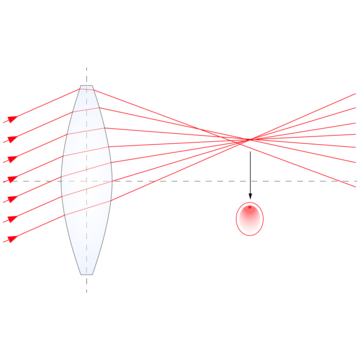
Coma
The coma error occurs when the collimated beam runs at an angle to the optical axis. The beam path runs pretty asymmetrically through the lens and causes heavy distortions (teardrop or comet shaped) in the imaging plane.
Tip: The coma error can be reduced by selecting a suitable aperture. The aperture has to be positioned to only allow symmetrical beam parts to pass through.
Customized Optics Development
Tailored to your needs
You can’t find suitable laser optics?
Then ask for a customized development – it’s worthwhile not only for series production but also for smaller quantities.
With a customized development, you can expect the following:
- Optimal spot size through optics tailored to the required aperture and opening angle
- Consideration of mechanical conditions and interfaces
- Temperature compensation using special glass types coordinated with the mount (athermal design)
- Adjustment options to optimally achieve key parameters
- System optimization for optics designed for multiple wavelengths
In many cases, we can provide service offerings with our partners, such as:
- Conversion of existing optical systems to new glass types while retaining as many system parameters as possible
- Radius adjustment to standard radius tables
- Creation of complete optical drawing sets for manufacturing
Let’s clarify your requirements together:
We’d be happy to inform you about the possibilities of customized optical development at our company.

Product Overview
Our Laser Lenses
Read More
Beyond Borders
LASER COMPONENTS Germany - Your competent partner for optical and optoelectronic components in Germany.
Welcome to LASER COMPONENTS Germany GmbH, your expert for photonics components. Each product in our wide range of detectors, laser diodes, laser modules, optics, fiber optics, and more is worth every Euro (€/EUR). Our customized solutions cover all conceivable areas of application: from sensor technology to medical technology. You can reach us here:
Werner-von-Siemens-Str. 15
82140 Olching
Deutschland
Phone: +49 8142 2864-0
Email: info(at)

